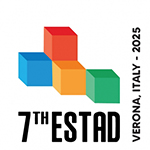Speaker
Description
The hydrogen plasma smelting reduction process is a promising technology for sustainable steel production from iron ores, utilizing molecular, atomic and ionized hydrogen as reducing agents. The reactor is basically a gas-tight direct-current electric arc furnace with a hollow graphite cathode for material and gas feeding. To investigate scale-up parameters, there exists a demonstration plant with a capacity of 100 kg iron ore per trial at the site of voestalpine Stahl Donawitz GmbH in Leoben, Austria, which is operated by K1-MET GmbH, Linz, Austria. This study examines the impact of selected parameters on the reduction process and its hydrogen utilization. First, thermal insulation is applied to the vessel above the crucible to mitigate heat losses and enable higher bath temperatures. Second, different crucible refractory materials are evaluated for their performance, especially their chemical interference with the slag. Lastly, the operation mode is changed from batch-wise pre-charging to continuously feeding the ores through the cathode. The metal and slag samples obtained after the trials are chemically analyzed and compared, while the off-gas composition is monitored on-line. These combined results provide insights into the optimization of process conditions for hydrogen plasma smelting in industrial demonstration scale.
